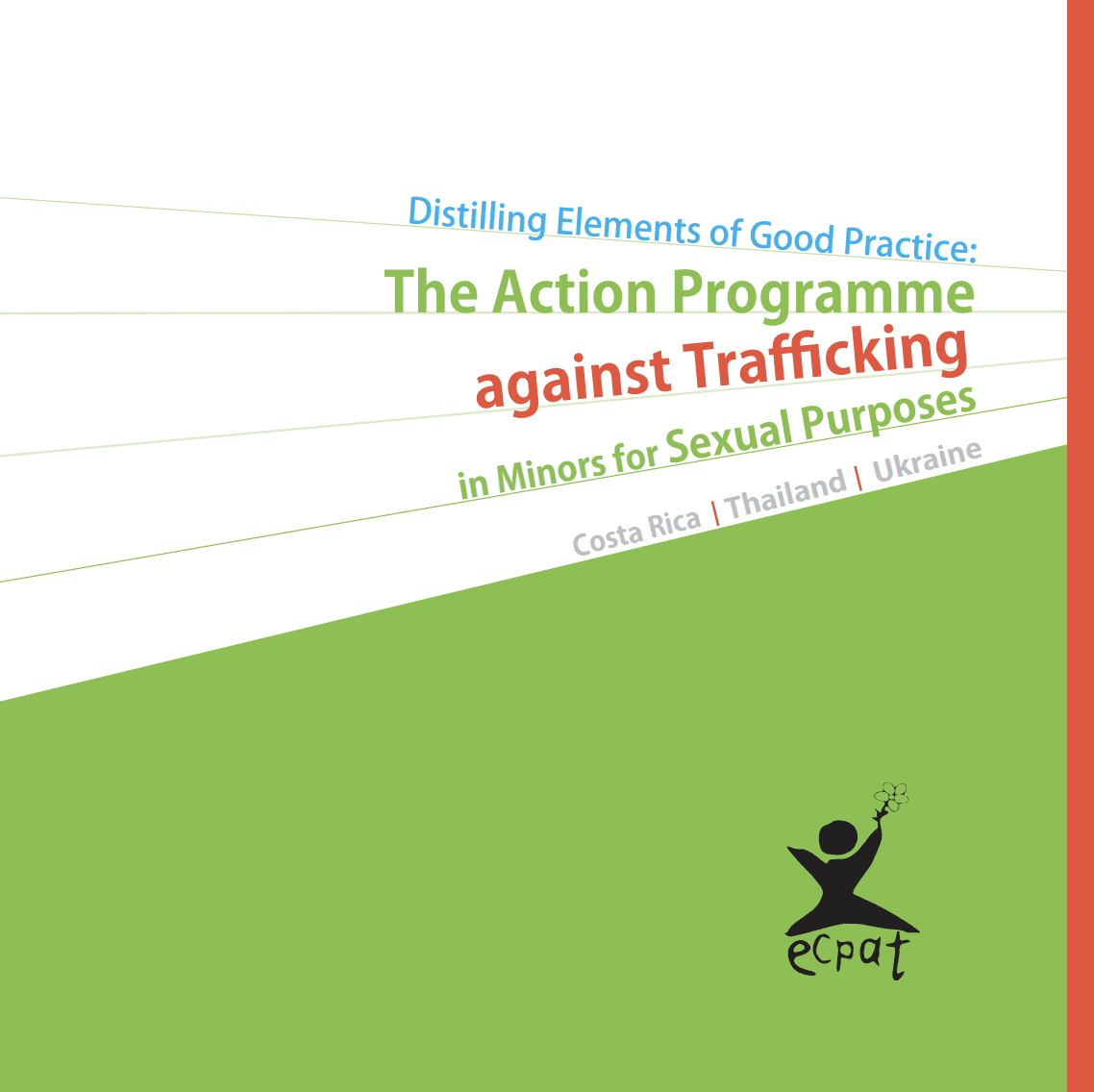
Distilling Elements of Good Practice: The Action Programme against Trafficking in Minors for Sexual Purposes
ECPAT International’s work to galvanise global attention and action against commercial sexual exploitation of children, including child trafficking for sexual purposes, has demonstrated that despite the gains made through both national laws and international conventions, these still suffer from the inadequacy of implementation and we are yet to move from the rhetoric of outrage against these grave violations and heinous crimes against children, to the action and enforcement that is required to effectively protect children.
The Action Programme against Trafficking in Minors for Sexual Purposes aimed to reduce child trafficking for sexual purposes through various combined interventions tailored to the specific needs of the countries involved: Costa Rica, Thailand and Ukraine, while ensuring these were consonant with international standards. In addition, when identifying activities at local level in collaboration with our affiliate groups and partners, we took into consideration the similarities between these national contexts. Despite their locations in different regions, the countries where the Programme was implemented present common features in terms of child trafficking for sexual purposes not only because they are all origin, transit and destination countries with a major subregional and internal trafficking problem. In all three countries, local demand represents one of the main push factors of the sexual exploitation of trafficked children, although child sex tourism also fuels the trafficking chain. Additionally, child trafficking is connected to the production and distribution of child abuse images, with the increased use of the Internet and other ICTs by child traffickers and child sex tourists in these countries.
The Action Programme provided an opportunity to address this multi-faceted violation of the human rights and dignity of children. In this framework, the design and formulation of project activities were based on the assumption that it was necessary to work simultaneously on strengthening law enforcement, enhancing prevention and providing effective victim assistance while avoiding overlap with other ongoing activities and programmes being implemented.
The Action Programme has made an important contribution to the fight against trafficking in children for sexual exploitation in Costa Rica, Thailand and Ukraine. The examples of good practice and lessons learned illustrated in this booklet show the benefit of interactive programme elements and their overall, cumulative effect on reinforcing a child rights-focused programme that prioritises the needs of children within countertrafficking responses and activities. Groups in the three countries worked on improving their capacity for identifying children who are victims of trafficking (and so should subsequently receive the required care and protecton), to prevent them being mistakenly categorised as illegal immigrants. A participatory strategy, which involved the contribution of key stakeholders from government, non-government and community groups in designing and implementing project activities, impacted on the prevention, prosecution, victim assistance and protection initiatives, making them more responsive to the needs of children, with subsequent benefits for those children exposed to or victims of trafficking.
The Action Programme was an important step in the fight against child trafficking for sexual purposes and I take this opportunity to thank our local partners, FACE, Fundación Paniamor and La Strada for all their efforts in making this initiative a success. ECPAT is committed to building on the valuable efforts of this project in collaboration with government institutions, international and non-governmental organizations, for as the examples illustrated in this booklet will attest, such collaborations can create a formidable force for the protection of children against trafficking for sexual purposes and serve as a united front to convey that these serious violations of human and children’s rights will not be tolerated or go unpunished.
Read more here.
